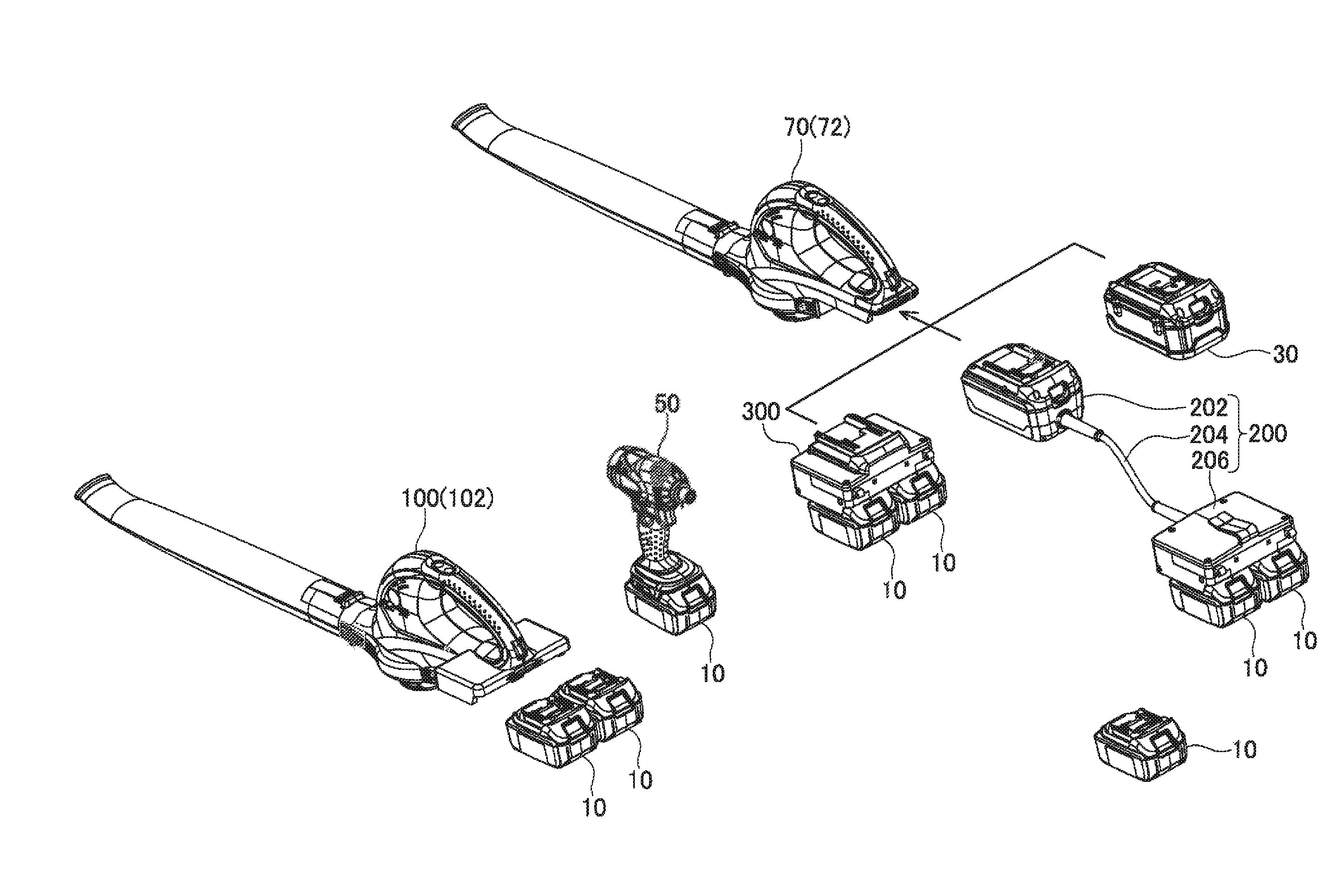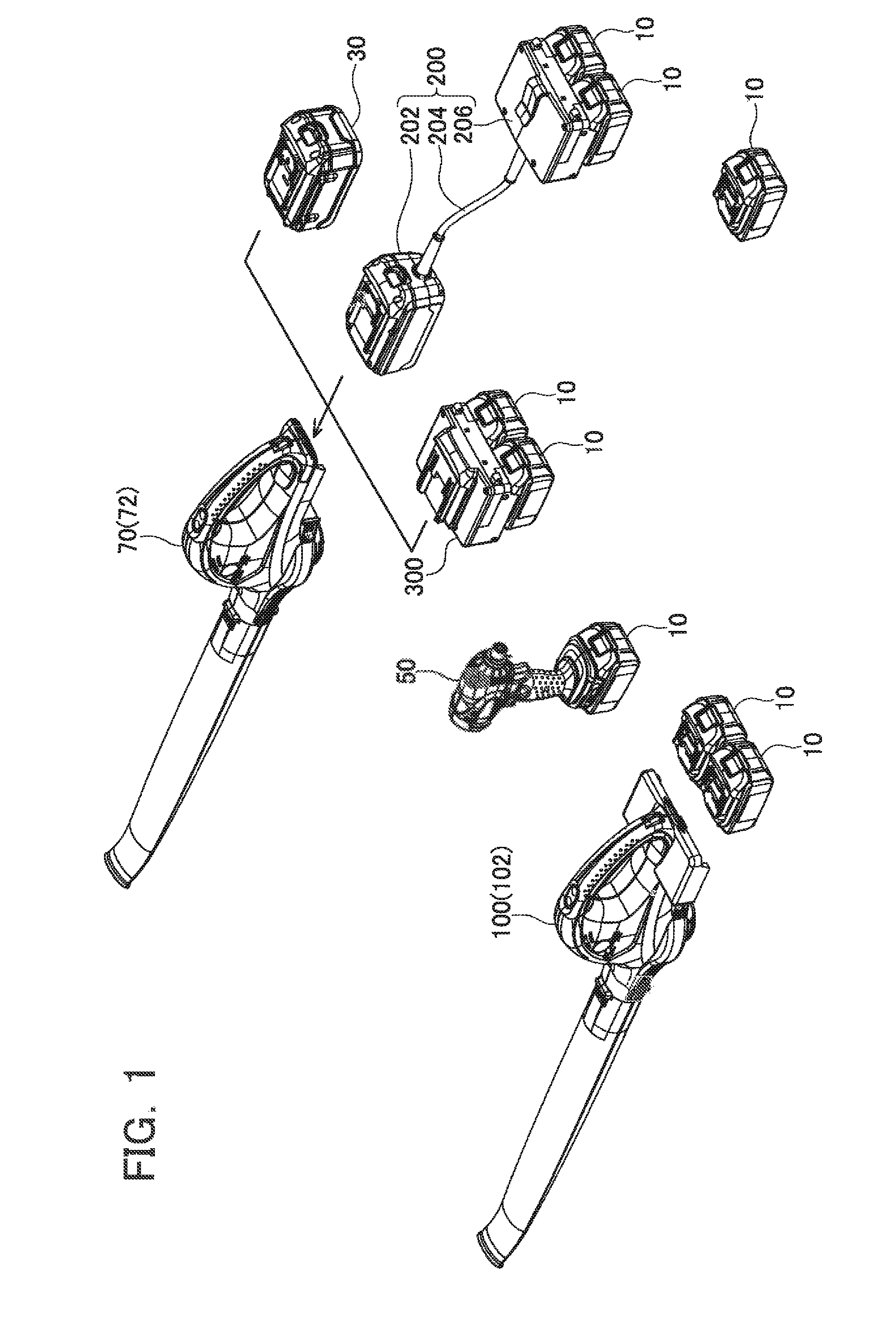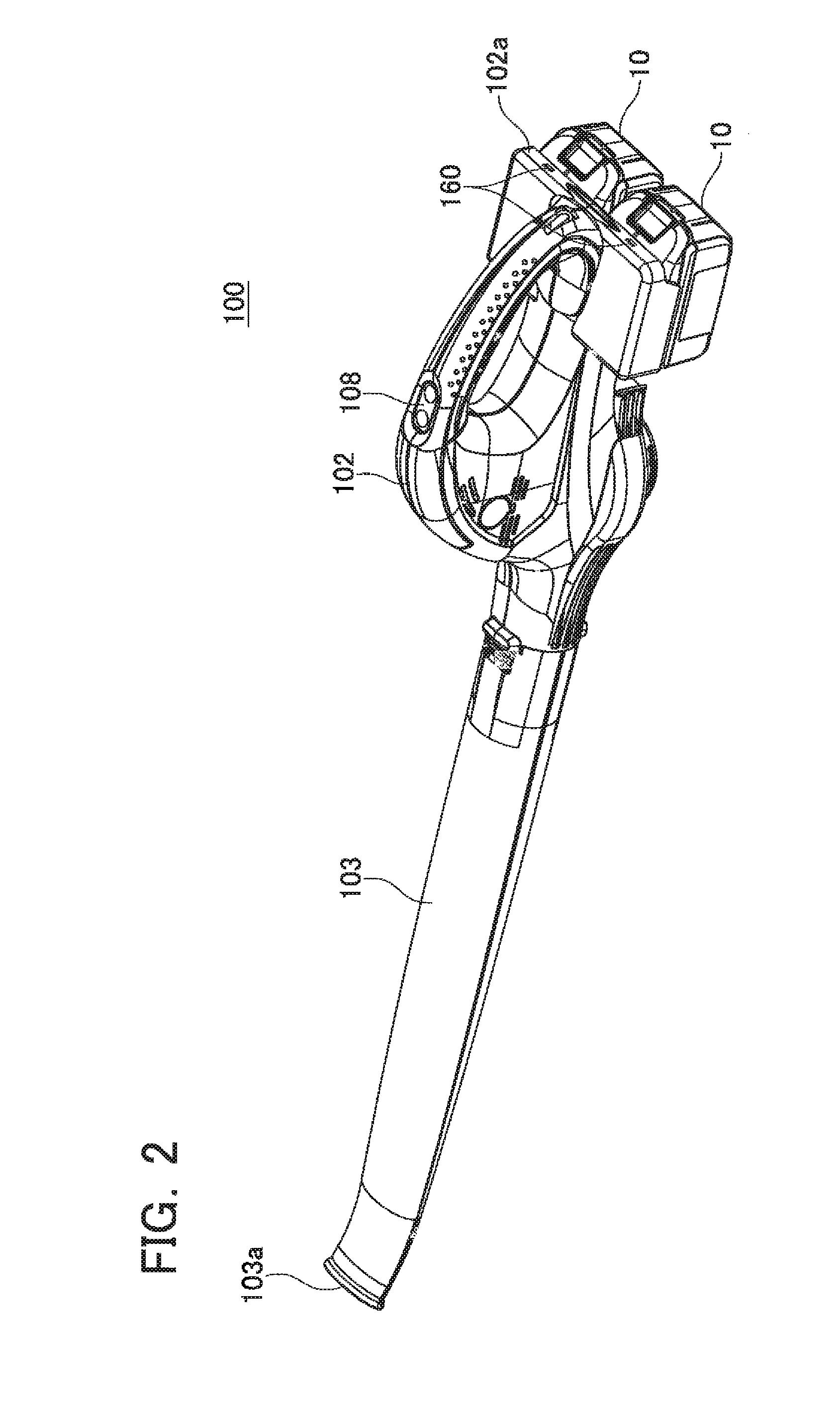Electric tool powered by a plurality of battery packs and adapter therefor
a technology of battery packs and adapters, which is applied in the direction of portable power tools, battery overheat protection, safety/protection circuits, etc., can solve the problems that the signal voltage outputted by the controller of the electric tool cannot be directly inputted to at least one of the integrated circuits of the battery pack, and the voltage outputted from the second battery pack is too high to be used, so as to prevent the lithium-ion cells and prolong the service life of the battery pack. ,
- Summary
- Abstract
- Description
- Claims
- Application Information
AI Technical Summary
Benefits of technology
Problems solved by technology
Method used
Image
Examples
Embodiment Construction
[0038]FIG. 1 shows an exemplary, non-limiting group of cordless power tool products according to one embodiment of the present teachings. As shown in FIG. 1, the group of products includes two types of battery packs 10, 30, three types of electric power tools 50, 70, 100, and two types of adapters 200, 300. The “high-voltage” electric power tool 70 is normally intended to use a single “high-voltage” battery pack 30 as a power source. However, the adapters 200, 300 may serve to electrically connect a plurality of “low-voltage” battery packs 10 to a main body 72 of the electric power tool 70 so that the electric power tool 70 is supplied with the same or substantially the same voltage as the “high-voltage” battery pack 30.
[0039]In the present exemplary embodiment, the first battery pack 10 has a nominal voltage of 18 volts and the second battery pack 30 has a nominal voltage of 36 volts. For the sake of convenience in the following description, the first battery pack 10 having the nom...
PUM
 Login to View More
Login to View More Abstract
Description
Claims
Application Information
 Login to View More
Login to View More - R&D
- Intellectual Property
- Life Sciences
- Materials
- Tech Scout
- Unparalleled Data Quality
- Higher Quality Content
- 60% Fewer Hallucinations
Browse by: Latest US Patents, China's latest patents, Technical Efficacy Thesaurus, Application Domain, Technology Topic, Popular Technical Reports.
© 2025 PatSnap. All rights reserved.Legal|Privacy policy|Modern Slavery Act Transparency Statement|Sitemap|About US| Contact US: help@patsnap.com



